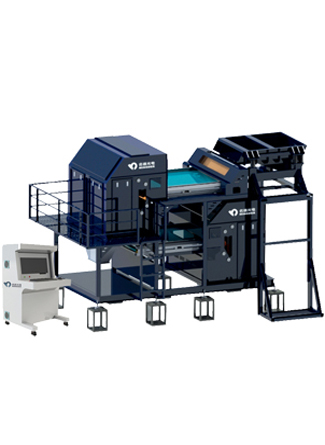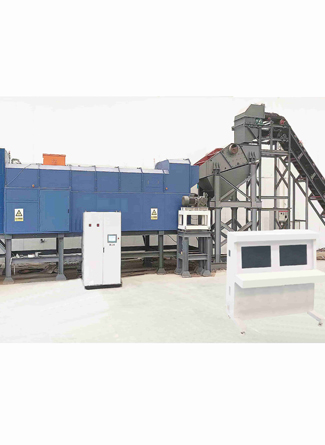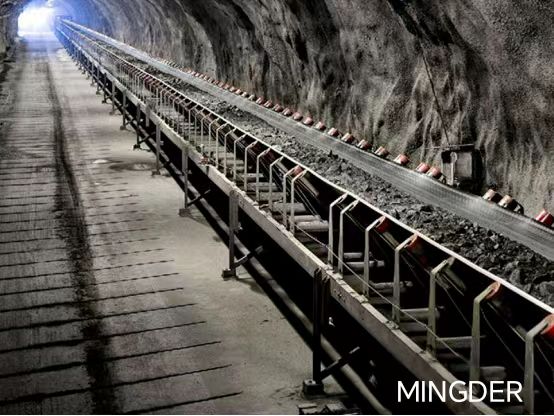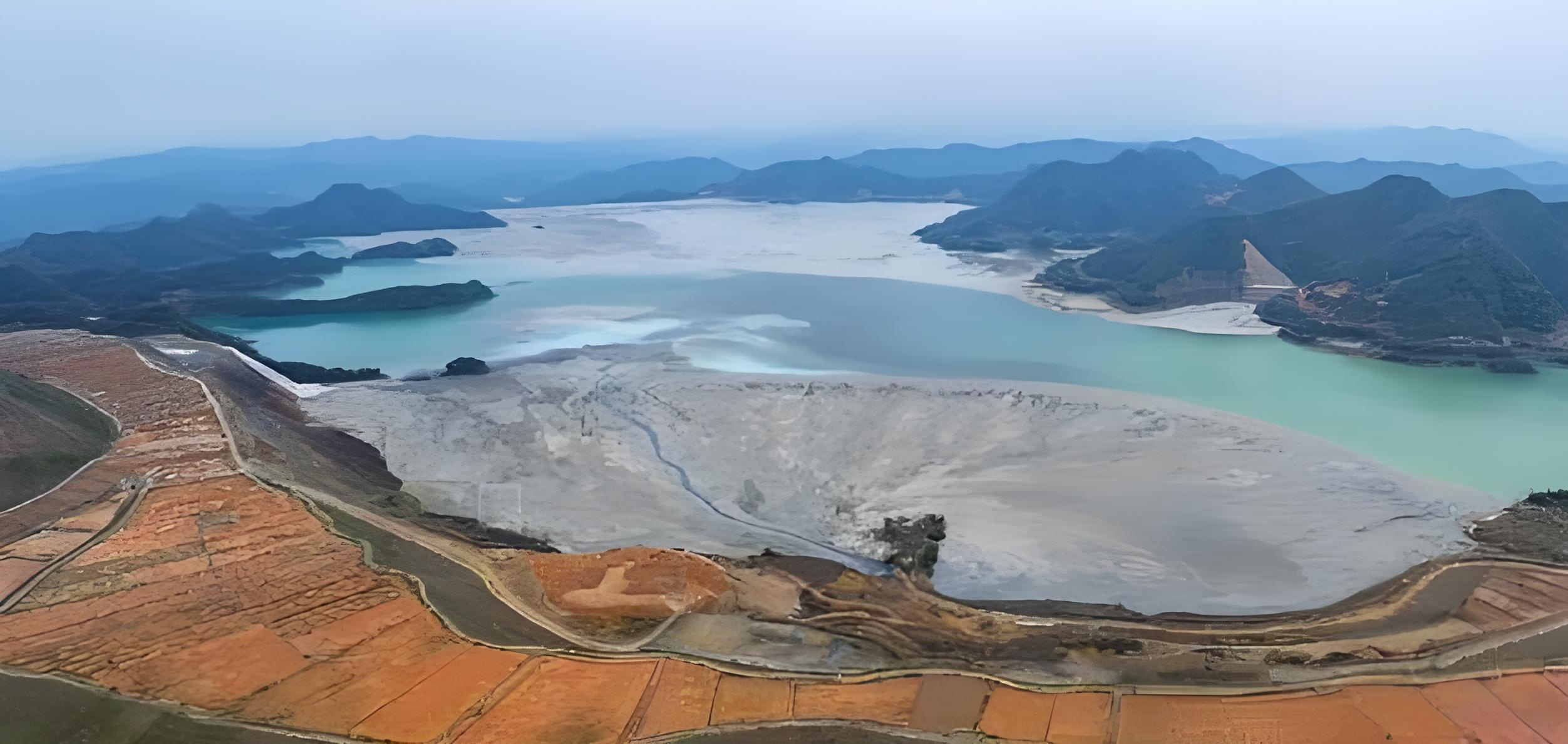




In the heart of the mine, ore conveyor belts run day and night, shouldering the core mission of material transportation. However, this "lifeline" often faces severe challenges: mixed giant waste rocks may tear the expensive belts in an instant; imperceptible metal fragments quietly bury the root cause of equipment wear; stubborn lumps of wet fine materials condense and block the channel, forcing the entire production line to stop helplessly. The traditional method of relying on human eye recognition and manual sorting is not only inefficient next to the high-speed belt, but also exposes workers to the danger of splashing ore and continuous noise. Mines are in urgent need of a smarter and more reliable solution.
At this moment, a new generation of intelligent foreign body removal robots came into being, becoming the precise and tireless "guardian eyes" and "sorting hands" beside the conveyor belt. Its core strength comes from its "autonomous perception and decision-making capabilities":
Dynamic 3D modeling: Equipped with high-precision 3D vision sensors such as LiDAR and depth cameras, the conveyor belt captures dense point cloud data of the ore flow on the surface every second. Advanced algorithms instantly complete point cloud splicing and 3D reconstruction, accurately restoring the true outline, volume and spatial coordinates of each ore and each foreign object in the virtual space, laying a solid foundation for subsequent operations.
Intelligent identification and positioning: The powerful AI vision system deeply analyzes 3D models and high-definition images. It can not only clearly distinguish different targets such as target ores, dangerous metals, huge waste rocks and adhesions, but also track their movement trajectories in real time, calculate the precise grasping points, and achieve millimeter-level positioning accuracy, ensuring that the robotic arm can "see clearly" and "aim accurately".
Autonomous planning and dexterous execution: Based on real-time perception data, the robot autonomously plans the optimal grasping path and action sequence. The multi-degree-of-freedom robotic arm is like a miner's dexterous hands, and with the customized end effector - whether it is a hydraulic gripper that grabs large foreign objects with force, a vacuum suction cup that gently sorts precious ores, or a vibrating crushing head designed for breaking agglomerates - it can complete the task efficiently. The adaptive control algorithm ensures smooth and precise movements to avoid impact on the conveyor belt.
The robot demonstrates excellent all-round capabilities in complex sorting scenarios in mines:
1. Accurately grab the target ore: Strictly following the preset sorting standards (such as specific types and sizes), the robot accurately identifies and grabs the target material from the flowing ore, and gently puts it into the designated collection port or diversion transfer line, greatly improving the concentrate quality and resource utilization.
2. Efficient removal of stubborn agglomerates: For stubborn agglomerates formed on the fine material conveying line due to moisture adhesion, the robot can quickly identify their location and volume, drive the special crushing head or powerful gripper to implement efficient removal, ensure smooth transportation, and avoid unplanned downtime caused by blockage.
3. Automatic removal of dangerous foreign objects: For potential equipment killers on the conveyor belt (such as huge waste rocks, sharp metal fragments, detonators and other dangerous goods), the robot can achieve millisecond-level response and removal, becoming a key line of defense to protect downstream crushers, screening equipment and the entire belt system.
4. Customized sorting demand response: The open control platform supports the rapid introduction of new sorting rules and target feature templates. Whether it is required to prioritize the removal of a certain color of gangue or to divert a certain shape of minerals, the system can quickly adapt through software updates without complex hardware modifications.
Compared with traditional sorting methods or fixed iron removers, intelligent foreign body removal robots bring disruptive advantages:
Efficiency Leap: 24-hour non-stop operation, processing speed far exceeds manual work, significantly improving overall material handling efficiency.
Sharp cost reduction: Greatly reduce equipment damage and unplanned downtime maintenance costs caused by foreign matter; reduce dependence on labor in high-risk positions, saving manpower and safety investment.
Accuracy guarantee: AI recognition combined with high-precision robotic arms, sorting consistency and accuracy far exceed manual visual inspection, ensuring stable product quality.
Safety upgrade: Completely free workers from dangerous, dusty and noisy conveyor belts to achieve inherent safety.
Flexible and adaptable: Its autonomous modeling and learning capabilities enable it to quickly adapt to changes in ore characteristics, new foreign body types and new sorting requirements.
Intelligent foreign body removal robots, with their powerful capabilities of autonomous modeling, intelligent identification and precise execution, are profoundly changing the traditional mode of mine transportation and sorting. They are not only powerful removers of foreign bodies and faults, but also intelligent pioneers that improve efficiency, ensure safety and optimize resource utilization. With the continuous evolution and large-scale application of technology, these tireless "sorting hands" will surely inject more surging intelligent kinetic energy into the efficient, green and safe operation of mines around the world, and write a new chapter in the intelligentization of mines in the rhythm of ore flow.

In the process of mineral resource development, the beneficiation stage is the core link connecting ore mining and the efficient utilization of resources. With the decline in ore grade, the increase in mining costs and the increasingly strict environmental protection requirements, the traditional mineral processing technology is facing challenges such as low efficiency, high energy consumption and serious resource waste. Against this background, ore pre-separation technology, as an efficient and energy-saving pretreatment method, has gradually become an important direction for the innovation of modern mineral processing technology. The dissociation degree of the ore, as a key parameter affecting the separation effect, further determines the applicability of the pre-separation technology and the selection of equipment.

1.The Core Significance of Ore Pre-separation Technology
a. Enhance the efficiency of mineral processing and reduce subsequent costs
Pre-separation technology significantly reduces the volume of ineffective processing by separating waste rock or low-grade ore in advance before the ore enters high-energy-consuming processes such as grinding and flotation. For instance, through photoelectric separation or X-ray separation technology, the waste rock removal rate can be increased to 30%-50%, directly reducing the energy consumption of grinding and the consumption of chemical agents. Studies show that pre-separation can reduce the overall beneficiation cost by 15% to 30%.
b. Optimize resource utilization and promote the construction of green mines
Pre-separation technology can precisely recover borderline grade ores and reduce resource waste. At the same time, by reducing the discharge of tailings and the entry of harmful substances into subsequent processes, the risk of environmental pollution can be lowered, which is in line with the sustainable development needs under the "dual carbon" goals
c. Adapt to the characteristics of complex ores and enhance process flexibility
For polymetallic coexisting ores and ores with uneven particle size distribution, the pre-separation technology can achieve differentiated separation through multi-dimensional parameter regulation (such as color, density, electromagnetism, etc.), laying the foundation for subsequent refined separation.

2. The Influence of Ore dissociation Degree on Pre-separation Technology
The degree of dissociation refers to the degree of individual dissociation of useful minerals and gangue minerals in the ore, and it is the core indicator determining the selection of separation methods:
Highly dissociated ores (such as coarse-grained interwoven type) : The boundary between minerals and gangue is clear, and they can be efficiently separated through physical separation (such as photoelectric and heavy medium separation).
Low dissociation degree ores (such as fine-grained interwoven type) : Dissociation needs to be achieved through grinding. Pre-separation should be combined with the particle size distribution characteristics of the ore after crushing, and advanced technologies such as X-ray or hyperspectral identification should be adopted for identification.
Therefore, the selection of pre-sorting techniques should be based on the analysis of dissociation degree. If the difference in dissociation degree is ignored and a single sorting method is blindly adopted, it may lead to the loss of useful minerals or low sorting efficiency.

3. Technical Advantages and Application Value of Mingde Optoelectronics' Mineral Processing Equipment
As a leading enterprise in domestic intelligent sorting equipment, Mingde Optoelectronics has demonstrated remarkable technical adaptability and economic benefits in the field of ore pre-sorting, especially in scenarios with varying degrees of dissociation.
a.High-precision photoelectric recognition technology
Mingde equipment combines multi-spectral imaging with AI algorithms to quickly identify differences in color, texture and mineral composition on the surface of ores. For instance, in the separation of tungsten ore, the equipment can distinguish wolframite from quartz gangue, with a separation accuracy of over 98%, and is suitable for coarse-grained ores with a high degree of dissociation.
b. Dynamic dissociation degree adaptive sorting
For low-dissociation ores, Mingde equipment integrates X-ray transmission technology to penetrate the surface layer of the ores and detect internal composition differences. Take a certain coal gangue as an example. After the ore is crushed to 50-150mm, the XRT separator can identify high-calorific coal and gangue, achieving the separation of coal from gangue and enhancing the recovery and utilization of high-calorific coal resources in the coal washing plant.
c. Intelligent regulation and energy-saving design
The intelligent control system equipped on the equipment can adjust the separation parameters (such as separation accuracy and separation threshold) according to the degree of ore dissociation, ensuring stability under different working conditions. Meanwhile, its modular design reduces the energy consumption per ton of ore by more than 50% compared with the traditional process.
d. Application Cases and Economic Benefits
In a gold mine project in Henan Province, the Mingde Optoelectronics separator was applied in the pre-separation stage after crushing, increasing the grade of the raw ore from 1.2g/t to 3.5g/t, achieving a waste rock removal rate of 45%, and saving over 8 million yuan in grinding costs annually. In addition, in the separation of brittle ores such as talc and brucite, the equipment reduces over-crushing through non-contact separation, further enhancing the resource recovery rate.
4. Future Outlook
With the deep integration of intelligent and big data technologies and mineral processing techniques, the pre-separation technology will develop in the direction of "online detection - dynamic separation - process closed-loop optimization". Enterprises like Mingde Optoelectronics have continuously innovated to upgrade their sorting equipment to higher precision and stronger adaptability, providing technical support for the efficient development of complex mineral resources. In the future, through the in-depth integration of the dissociation degree model and the sorting algorithm, the pre-sorting technology is expected to play a more core role in the construction of "waste-free mines" and "smart mines".
Ore pre-separation technology is not only a key approach to cost reduction and efficiency improvement, but also the inevitable way to achieve intensive utilization of resources. Mingde Optoelectronics' mineral processing equipment, with its precise adaptation to the characteristics of dissociation degree and technological innovation, provides efficient and green solutions for the industry, becoming an important engine driving the upgrading of mineral processing technology.